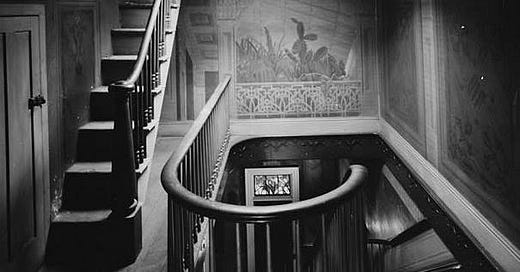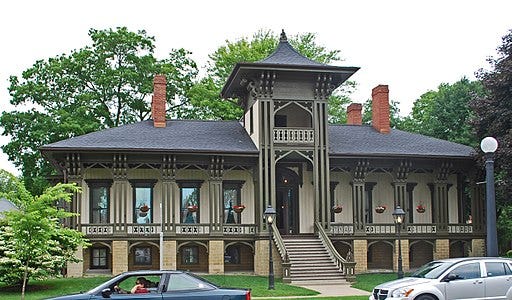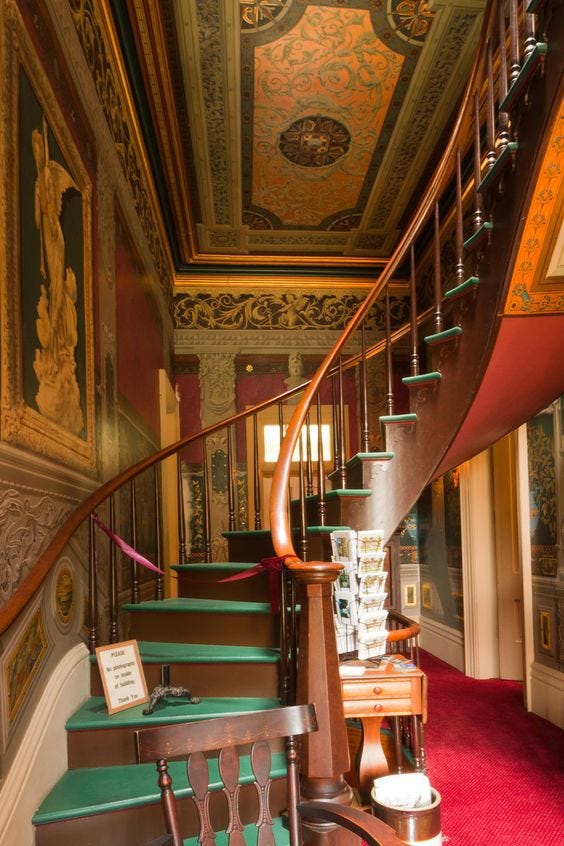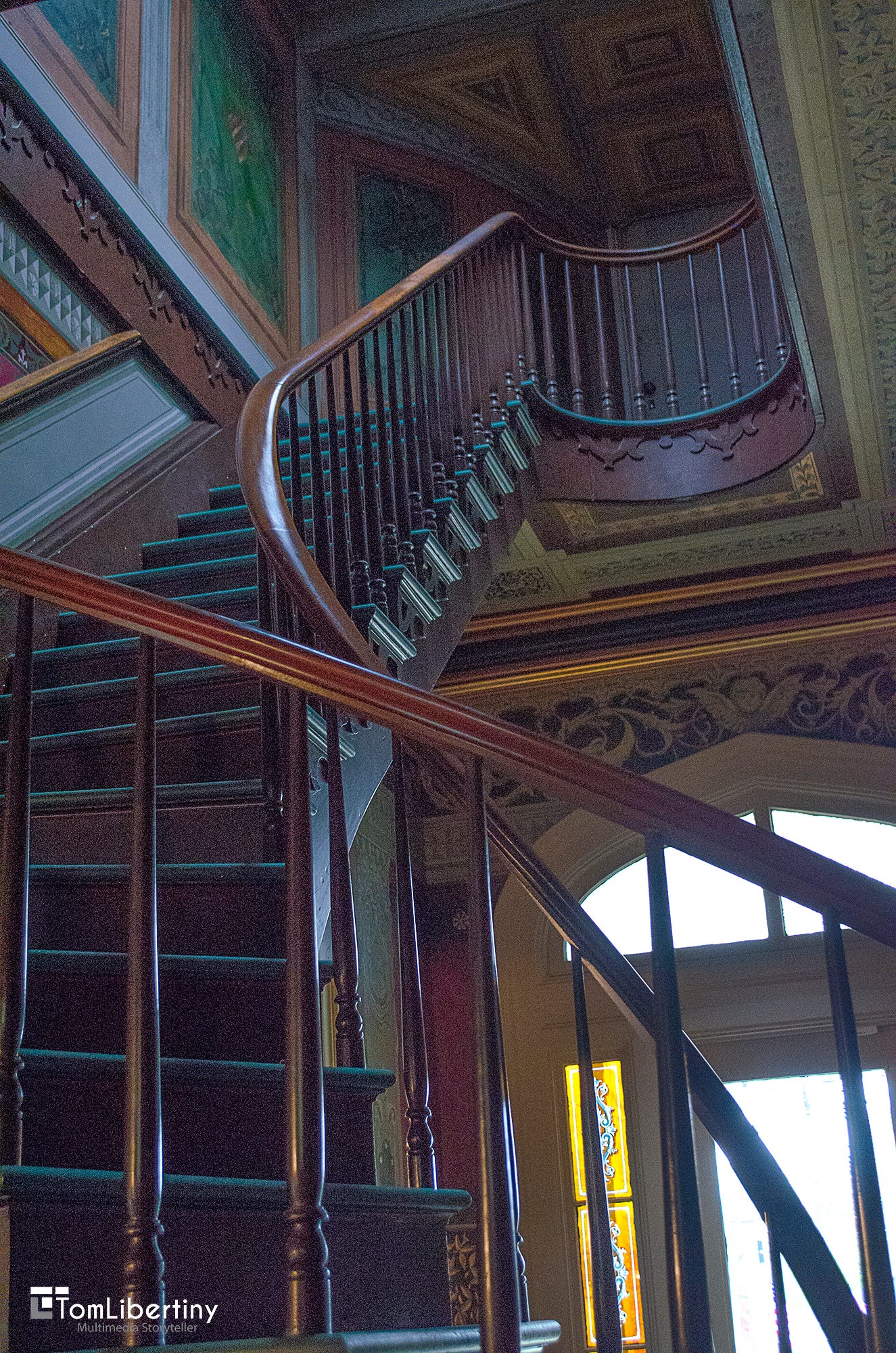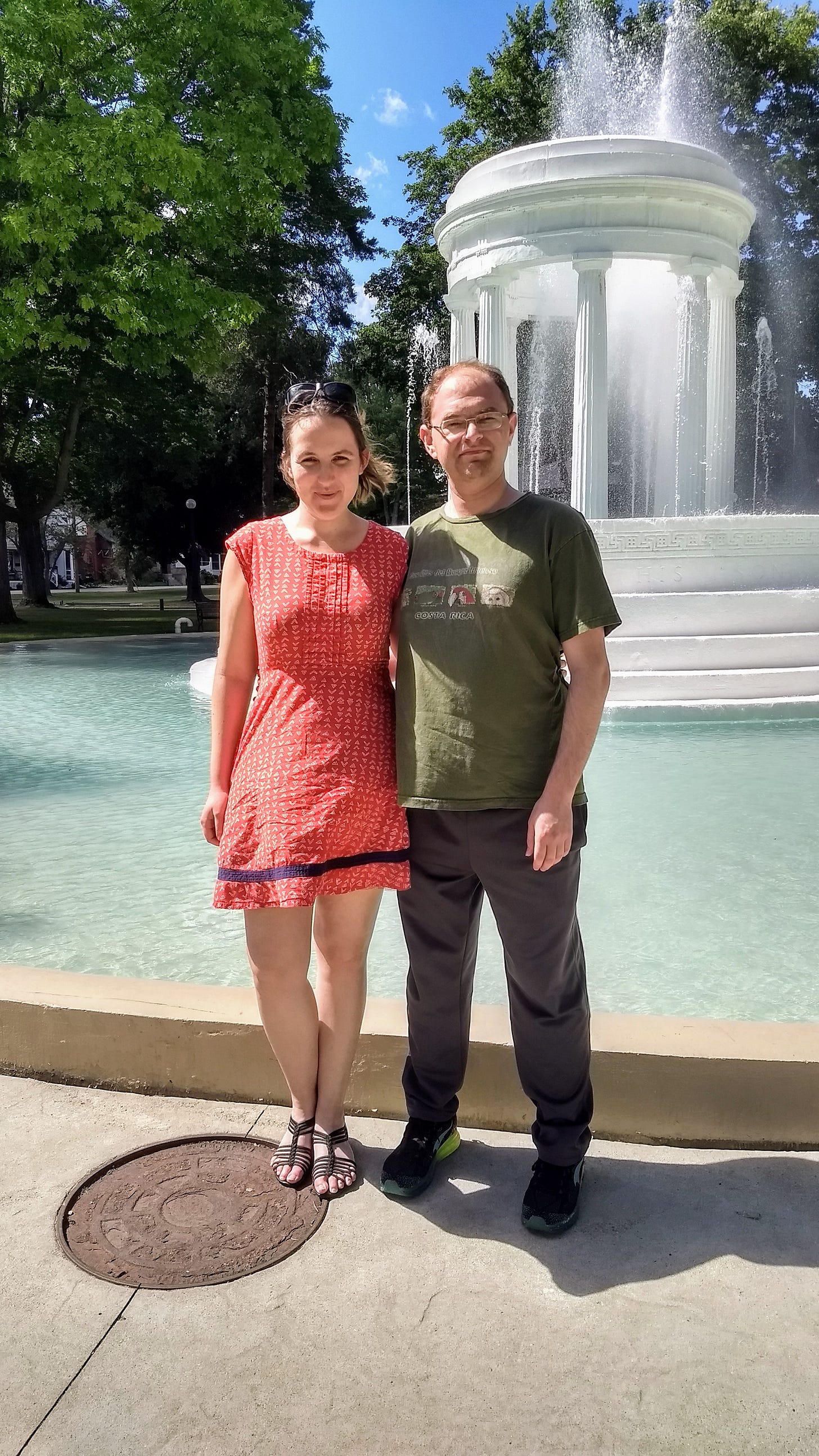Westland to Chicago
Friday was S’ last day at work. For any fellow connoisseurs of S facial expressions, this is a rare ‘just finished residency and about to eat pizza, but my girlfriend wants to take a picture of me’ one.
Saturday, we set out for California. In spite of one painful ear infection, little preparation, a suboptimal time-of-month choice, and two not entirely harmonious cases of OCD (“Wait, I wanted to wash my hands a thousand times—where is the soap?” “I threw it away, I wanted to throw away everything so that there is no troubling clutter” “You are throwing away things? But I love things! If I just squeeze them into every crevice of your car, can I keep all of the things?” “Oh no! You are putting things in my car? I wanted my car to be empty!”…)
I did try hard to pack lightly, but I may have also tried hard to pack thoroughly (I contain multitudes!)
As we closed the door the last time, S noticed he had forgotten to take down something he wanted, but it was nailed up. Happily I could produce a nail removing tool from my bag and the problem was solved. Unhappily I couldn’t do it without destroying any credit for trying at minimalism. In fairness, it was a very light and multi-toolular nail remover. In even more fairness, it may not have been the only one I had.
We planned to take a break at Marshall, a town the Internet had told me was the best place to stop between Detroit and Chicago. The internet had also told me that it was founded by a sturdy young miniature horse connoisseur who later became famous for fitting into small places. In the internet’s defense, it also sells grains of salt relatively cheaply, and the advice to go to Marshall seems to have been solid.
We toured the Honolulu House, which I did not take any photos of, assuming the internet would also provide those. For some reason they are almost all of the outside, which seemed less interesting than the inside to me.
Outside, designed to be reminiscent of Hawaii:
Inside, painted to be reminiscent of Hawaii:
And painted a lot more in general (more):
(Photo by Tom Libertiny)
This interests me because I feel like lots of things could be more aesthetically pleasing than they are, and I wonder why they are not. And specific idiosyncratic attempts to please individual aesthetics seem like relevant data.
Here is what seems to have happened in this case:
Abner Pratt did successfully construct a weird house
The house couldn’t be sold for nearly what it took to build, after Pratt died (though it was a later owner who painted much of the inside)
Many people agree (now at least) that the house is beautiful or impressive
People think Pratt was weird and a thief, but these might be unrelated to his house.
Another interesting thing about the house was that the the tour guide described rooms very matter-of-factly as for signaling. Like, ‘this was the room for entertaining guests, so its purpose was to show wealth. These lamps point in two directions, and use electricity and gas, because that was a sign of wealth. If you look closely, these mirrors have diamond dust in them, because people realized that you could put diamonds in mirrors, and that would show wealth better.’ I feel like people didn’t bat an eyelid at this, though they would have argued if someone came to their house and said ‘oh lovely, this must be the wealth-signaling room—I see you have a high quality Persian rug there, very expensive!’
We also found a very symbolic looking fountain to stand in front of. Not shown: this was in the middle of a giant traffic circle in the center of town, and many residents had brought chairs to sit on the edges of it and watch the town’s annual old-car parade, which was about to start.
We spent a good part of the driving listening to the entirety of Joseph and the Amazing Technicolor Dreamcoat, I believe part of S’ ongoing (extremely successful) efforts to educate me about history. Given that I have a better idea of when Alexander Hamilton got married than, uh, some much more important facts about history than I dare admit, this is probably a good strategy.
At a minimum, there are only so many hours I can spend with ‘…and red and yellow and green and brown and…’ looping through my head before I firmly remember that someone maybe once had a really colorful coat. Which naturally leads to the question, ‘why do some stories become culturally significant?’ Which in this case, is I think because the story explains how the Jews came to be in Egypt, which is relevant to later stories, and describes goings on with Jacob’s family, who are considered the forefathers of different Jewish tribes. By which point, I have remembered several things about history.
